
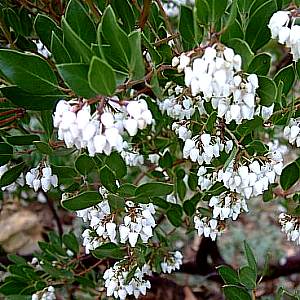 Arctostaphylos densiflora 'Howard McMinn', commonly known as the Sonoma Manzanita, is a large evergreen shrub endemic to Sonoma County in California. This Manzanita is a favorite in California landscapes due to its attractive characteristics, garden tolerance and dependability.
Arctostaphylos densiflora 'Howard McMinn', commonly known as the Sonoma Manzanita, is a large evergreen shrub endemic to Sonoma County in California. This Manzanita is a favorite in California landscapes due to its attractive characteristics, garden tolerance and dependability.
Like most Manzanitas, Arctostaphylos 'Howard McMinn' has striking, red peeling bark. The shrub is naturally low-branching with a mounding habit, and can reach about six feet at maturity. The waxy, fasciculate, water-conserving leaves have a deep green hue and provide an interesting contrast to the bark, blossoms and berries.
In mid-winter to early spring, a bountiful display of white to light pink urn-shaped blossoms covers the plant. Manzanita blossoms are an important food source for hummingbirds, as well as other pollinators such as bees and butterflies. As the flowers fall, they create a carpet of sweet-smelling "snow" beneath the plant, which is a unique treat for Californians in drier, warmer areas that receive little to no winter snowfall.
Berries form after the blossoms drop, appearing green at first and transitioning in summer and fall to a deep reddish-brown that compliments the bark. The small, round berries hang in clusters and can resemble small apples, which is where the common name for Arctostaphylos species comes from. Manzanita literally means "Little Apple" in Spanish.
Sonoma Manzanitas thrive in full sun, and will tolerate poor soil and low water availability. Unlike many Arctostaphylos species, A. densiflora 'Howard McMinn' is quite adaptable to garden conditions such as a consistent watering schedule and nutrient-rich soil. It is long-lived and hardy to 10 degrees F. These characteristics make it one of the most widely-used Manzanitas in California gardens. Stop by your local nursery and check out our January Plant of the Month this winter!

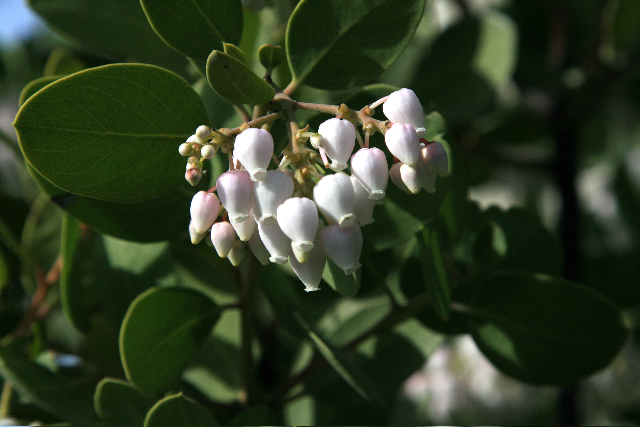

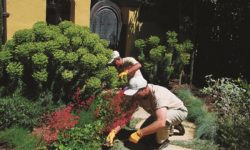
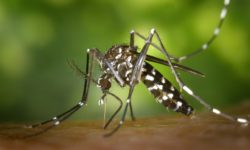

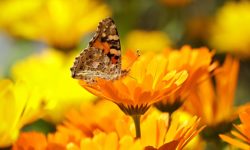
Covid-19 Business Status
All Seasons Landscaping
Covid-19 Business Status
Steve Lake
September Plant of the Month: Leucospermum 'Scarlet Ribbon'
All Seasons Landscaping